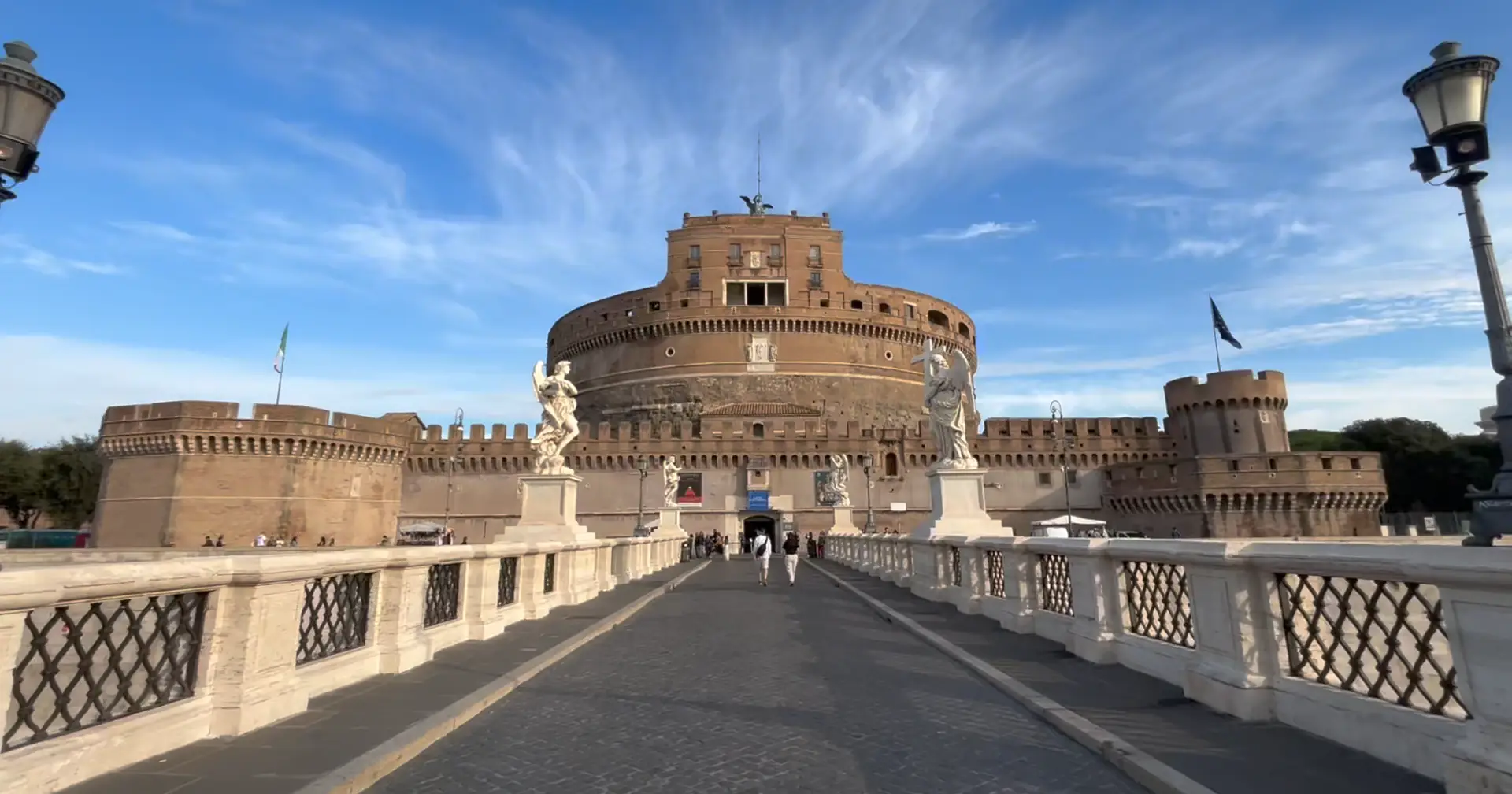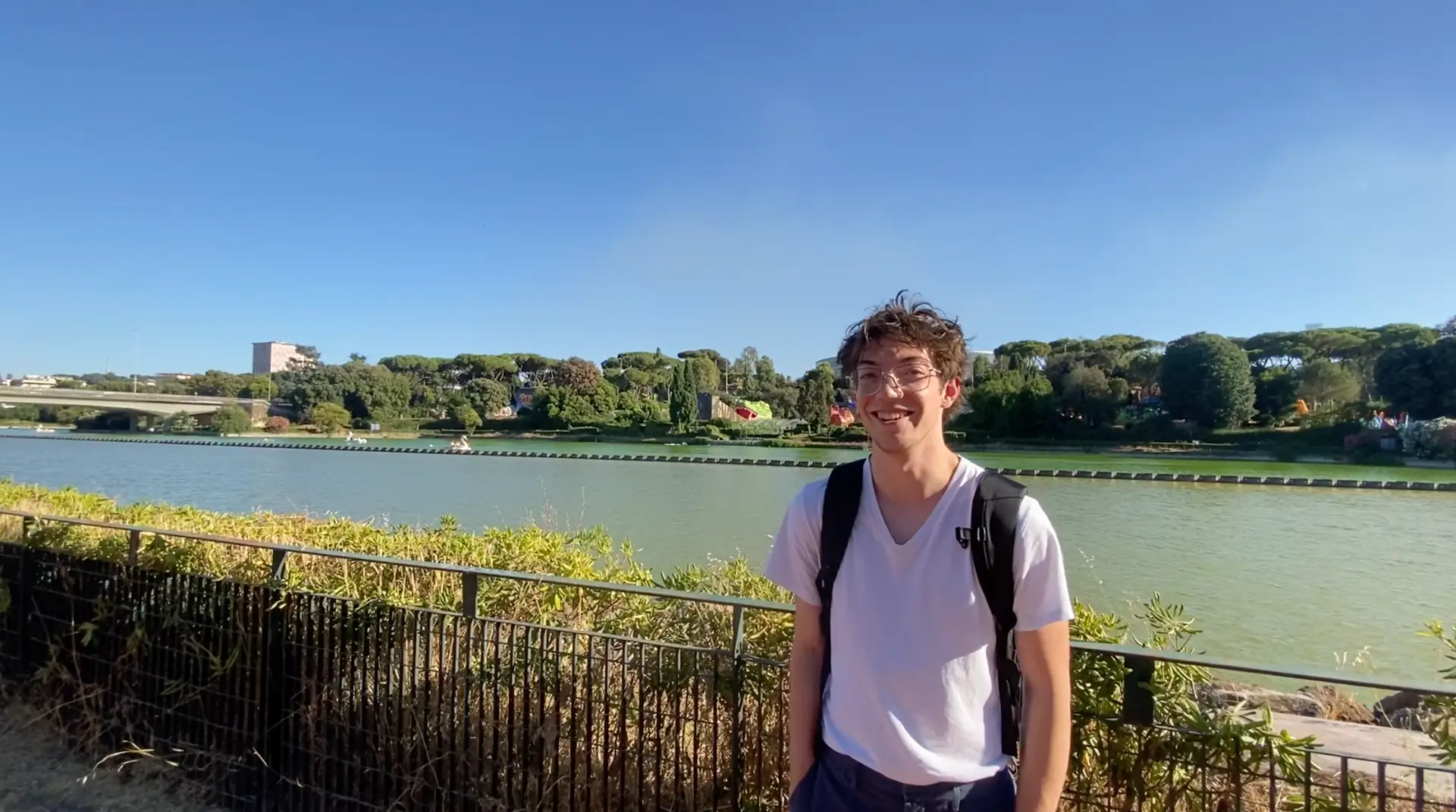Earlier this month, we spoke to architect Edoardo Cappella, professor of Architecture Design Studio at Pantheon Institute and co-founder of the Velia architecture and design studio. In this interview, Edoardo discussed how Rome offers the opportunity to witness architectural complexity born out of the spontaneous evolution of urban planning, creating an atmosphere of design that reflects centuries of cultural, social, religious, political, and engineering metamorphosis. Like rings on a tree, Rome’s long and continuing transformation is visible in the interwoven layers of the Eternal City’s built environment.
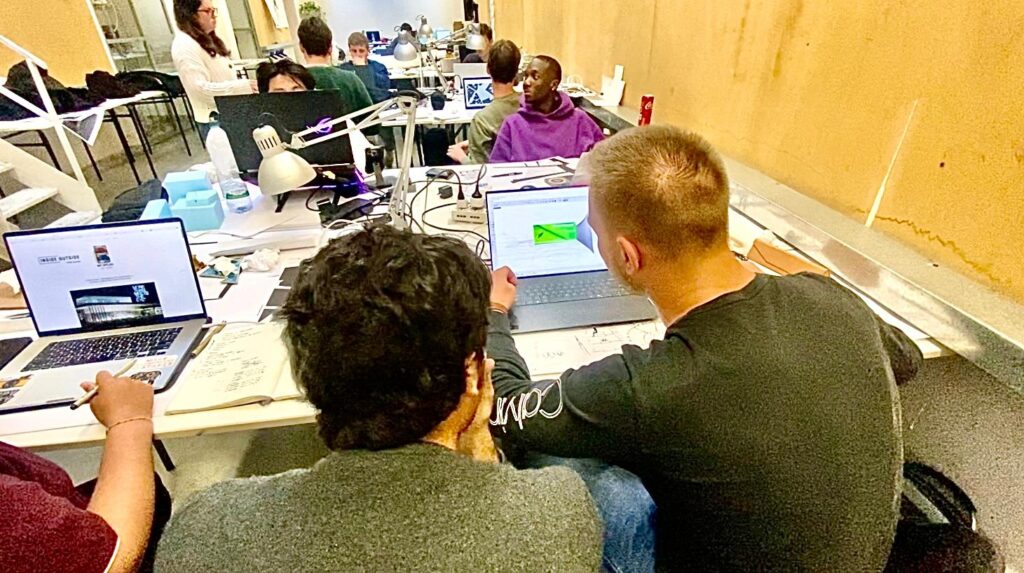
Edoardo advising students in Architecture Design Studio, Spring 2025
Born in Rome and a graduate of Rome’s La Sapienza University, Edoardo pursued architectural studies out of a sense of instinctual curiosity. As a professor of architecture, currently teaching Pantheon Institute’s Architecture Design Studio course, Edoardo educates his students on the observational nature of the design process and the necessity to articulate a cohesive narrative that ties together the complexity of design elements.
“The reason why I find teaching interesting is that it forces you to make a mental synthesis of the knowledge in order to pass it on in the most clear and direct way. That process of synthesizing what you know and what you can give is, in itself, an exercise that I think adds a dimension.” Edoardo Capella
Today, Rome is more often is correlated with the past, a remaining legacy of previous achievements and ancient traditions. However, Edoardo still thinks the Eternal City still holds essential lessons for the future of the built environment. In fact, it is the multiplicity of historical layers, the mosaic of architectural elements throughout the urban landscape, that demonstrate the valuable concept of complex design through spontaneity. “Rome teaches you something on what complexity is. And it’s right there around you, next to you, above you, below you. It’s a concept that is way more universal than history. … It’s about the amount of things that happened during the years and how they happened and the randomized nature of that.”

The Arco della Ciambella: Once part of the greater hot-air bath complex built by Emperor Agripa in 25 B.C., remnants of the Arco della Ciambella have been absorbed into the surrounding architecture on Via dell’Arco della Ciambella, just around the corner from the Pantheon.
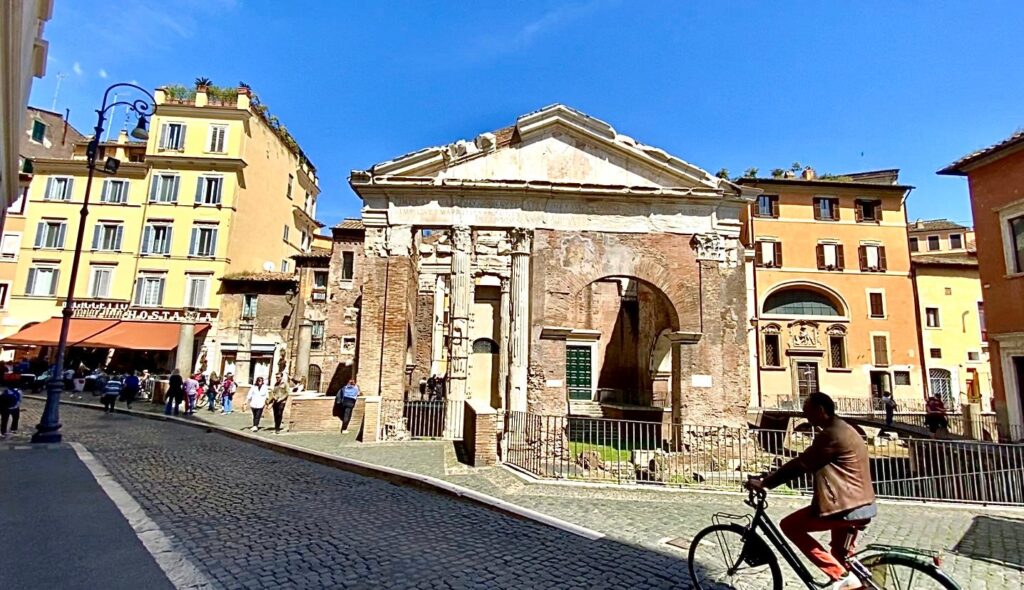
The Portico d’Ottavia: In honor of his sister Ottavia, Emperor Augustus commissioned the structure in 27 B.C. The archway sits within the grounds of a temple originally dedicated to the Roman god Juno. The portico was designated as a fish market during the early 1800s and is now part of the Jewish Ghetto neighborhood (originally established in the mid 1500s.)
While embracing a lack of planning may seem counter-intuitive to an architect, Edoardo explains that the impromptu, incremental, and evolutionary nature of Rome’s transformation over millennia reveals the concept of atmosphere in design. “When I say atmosphere, I mean a series of things that that sort of come together, which could be seen as the quality of light, the typology of the surfaces and of the materials and of the colors, also the vibrance of the people. All these things, I think they create this melting pot. For an architect, [this is important] because there’s elements there that can be sort of extracted and reused in very different circumstances, in very different scenarios, in other places, because they are universal qualities.”
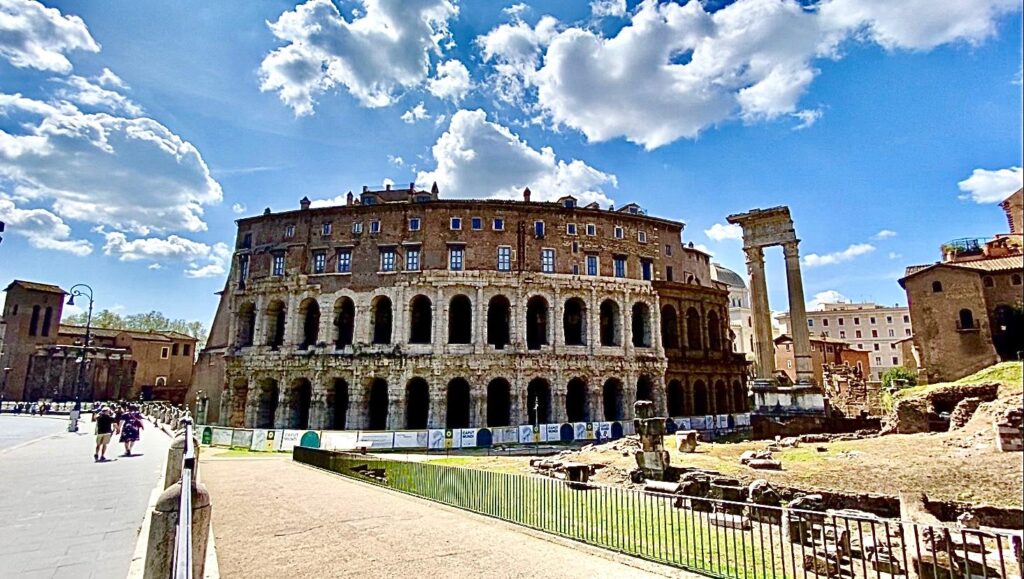
The Teatro Marcello: originally commissioned by Julius Caesar and built next to a temple of Apollo (179 B.C.), Teatro Marcello was inaugurated in 13 B.C. and dedicated to Marcus Claudia Marcellus, nephew to Emperor Augustus. In the 16th century, architect Baldassarre Peruzzi erected the private home addition, atop the ancient theater ruins, for the Savelli family.
Edoardo points to the Teatro Marcello as being the perfect example of architectural atmosphere born out of centuries of adaptation. “It’s an old theater with a house on top. … I think that’s an example of the layers, the accumulation of everything, this typological blend. It’s stuff that today would be completely inconceivable because it’s not planned. However, we are here talking positively about it. And this is I think something that we should reflect on.”
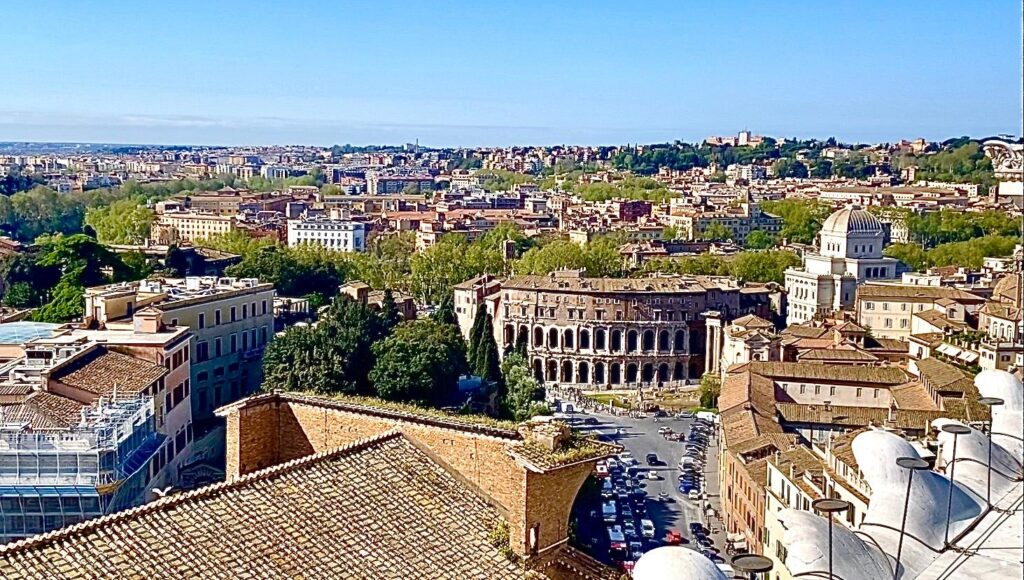
Aerial view of the Teatro Marcello.
Rome provides a perspective of what urban design was like before it was entrenched in seemingly immutable historical patrimony and reverent archeological preservation. “I think the big contradiction of Rome is this: you are in a city, today, which is treated with gloves in a way because the weight of history is too much and therefore everything you add doesn’t seem at the [right] level. [However] this approach is completely going against the way that this city has been treated for 99% of its history, [that] libertine way of approaching development of the city. It was just spontaneous, right? … [Rome] is made-up of so many different parts and I don’t see why we shouldn’t add our part.”
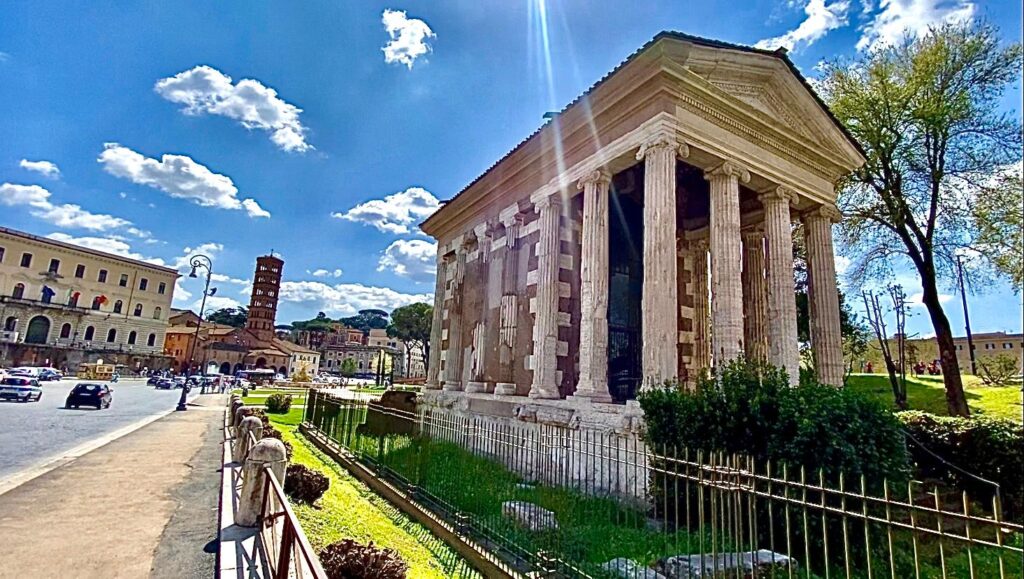
Tempio di Portuno: Dating back to the 3rd or 4th century B.C., this temple, situated along the Tiber River, was originally dedicated to Portunus, the river god of ports. In the 9th century A.D. the temple was reconsecrated as a Christina church, later becoming the Santa Maria Egiziaca in the 15th century. In the early 1900s, the temple was restored and now stands as a monument to ancient Rome.
According to Edoardo, this concept of perpetual collaborative design over time extends to a greater concept of community, of how the built environment influences collective identity across generations. Architecture is the physical manifestation of how we connect, how we separate, and how we organize our behavior. It is in our daily routine, weaving in and out of our built environment, that culture is shaped.

Construction on the Metro C line in Piazza Venezia, in front of the Vittorio Emanuelle Monument (left) and the Palazzo Venezia (right). The sprawling undergound station reappropriates sections of the ancient Roman Forum and Anteneo di Adriano. The €700 million project, started in 2023, is estimated to take 10 years to complete. Read more here.
Therefore, Edoardo argues that architects are essential to cultivating social identity, and that includes their input on the banality of repair or the renovation of smaller, seemingly innocuous spaces. “Architects shouldn’t be included in processes just when it’s about big interventions [or] symbolical happenings. They should be included in everything. Because you’re doing harm to a city if you renovate a small square somewhere and you don’t do it with the right mindset and you don’t think about, ‘what do people do in this space.'”
“It’s not just about the grand stuff, it’s about the everyday. The everyday matters just as much, or even more, because from the everyday you generate a culture which is [influenced from the] bottom up.” Edoardo Cappella
The architectural legacy of Rome is that it shows us how the spaces we inhabit and the structures we create shape how we see ourselves and each other. Furthermore, the eclectic remnants of Rome’s structural multiplicity remind us that it is our responsibility to continue the narrative, to pursue growth and rebirth in tandem with our appreciation for where we come from. Thank you, Edoardo, for sharing your thoughts on Rome’s rich complexity.
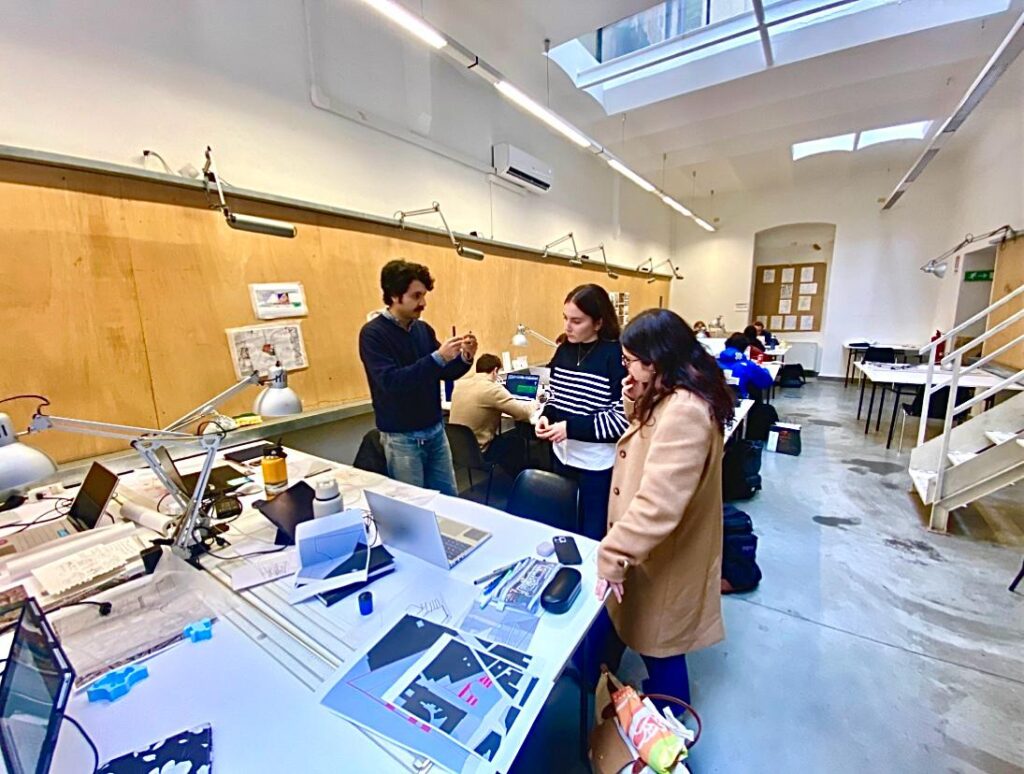
Edoardo talking to students in Architecture Design Studio, Spring 2025.
